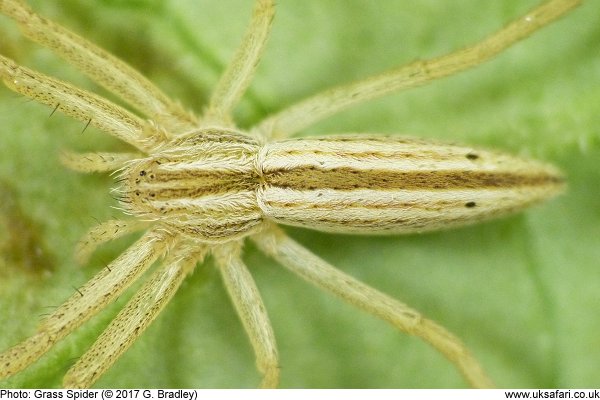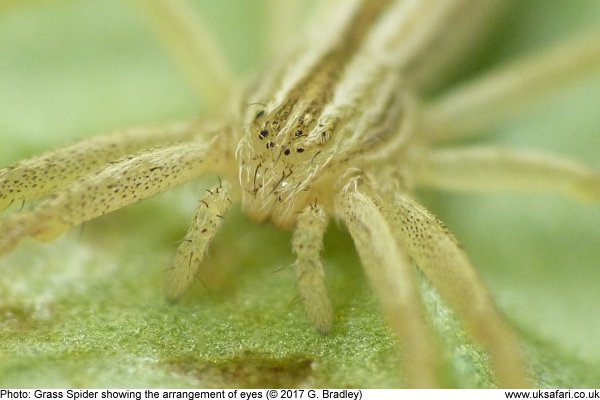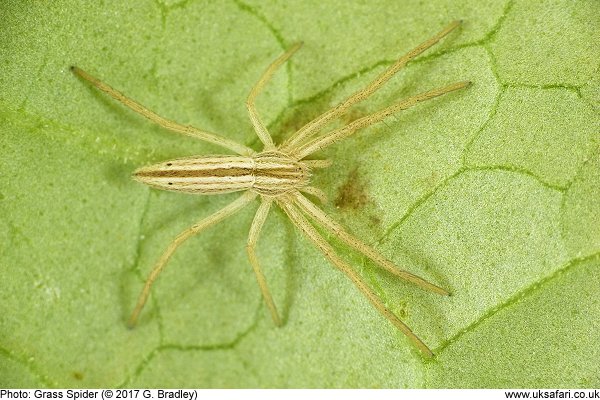 Quick Facts
Quick Facts
Scientific name: Tibellus oblongus
Size: Up to 10mm
Distribution: Found throughout the UK. More frequently found in southern England
Months seen: All year round, but mostly May to September
Habitat: Often found on coastal dunes among grasses, but also inland in damp fields and meadows
Food: Small invertebrates
Special features: Grass Spiders get their name from their preferred habitat among tall grasses. The scientific name 'oblongus' is derived from the elongated body shape.
The shape and straw colour helps to disguise them in long dry grass. There is a darker median line running the full length of the head and body, and there may be two darker spots either side of this towards the rear end of the abdomen.
The males and females are similar although the males have a slimmer abdomen.
Grass spiders assume a stretched out posture when resting.
 Related Pages
Related Pages

 Popular Pages
Popular Pages
Amphibians, Bats, Badgers, Beetles, Birds, Birds of Prey, Bumble Bees, Butterflies, Caterpillars, Creepy-Crawlies, Deadly Spiders, Dolphins, Dragonflies, E-Postcards, False Widow Spiders, Free Newsletter, Frogs, Fungi, Garden Spiders, Glow-Worms, Grey Squirrels, Hedgehogs, House Spiders, Ladybirds, Mammals, Marine Mammals, Moths, Owls, Reptiles, Spiders, Toads, Trees, Wildlife Hospitals
© Copyright 2017 G. Bradley - UK Safari | About Us | Links | Contributors


 Grass Spiders
Grass Spiders




